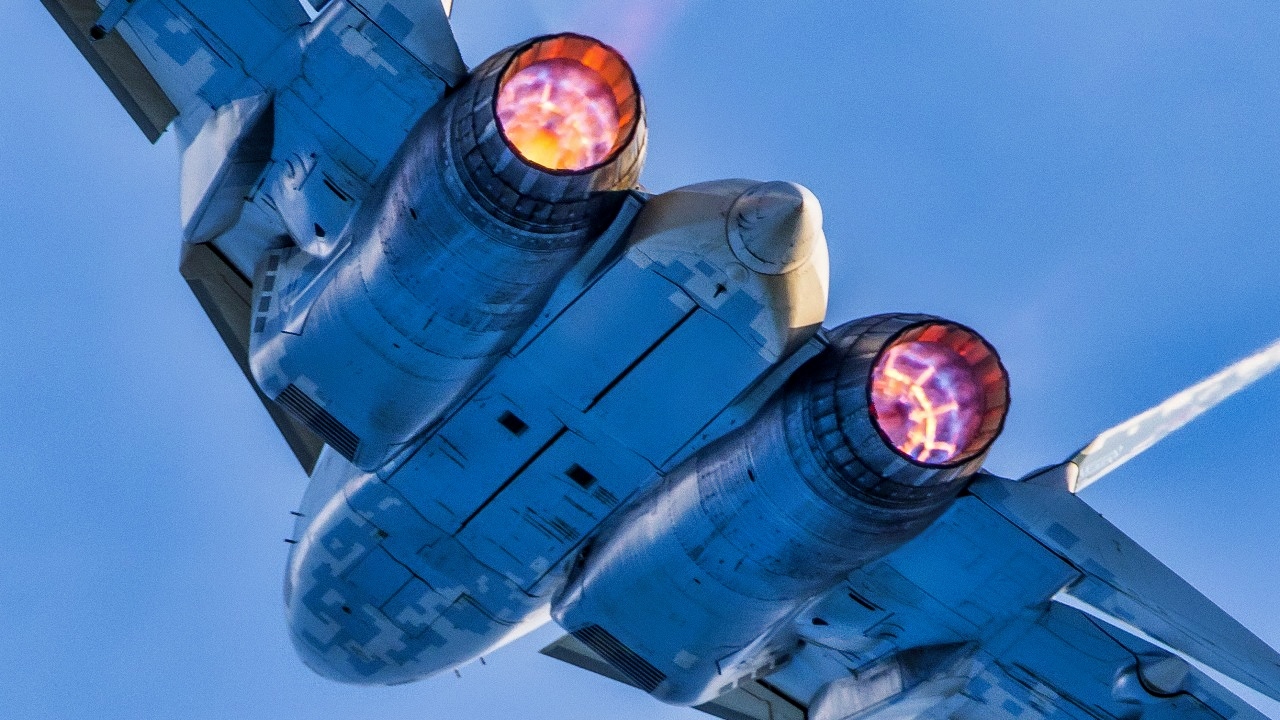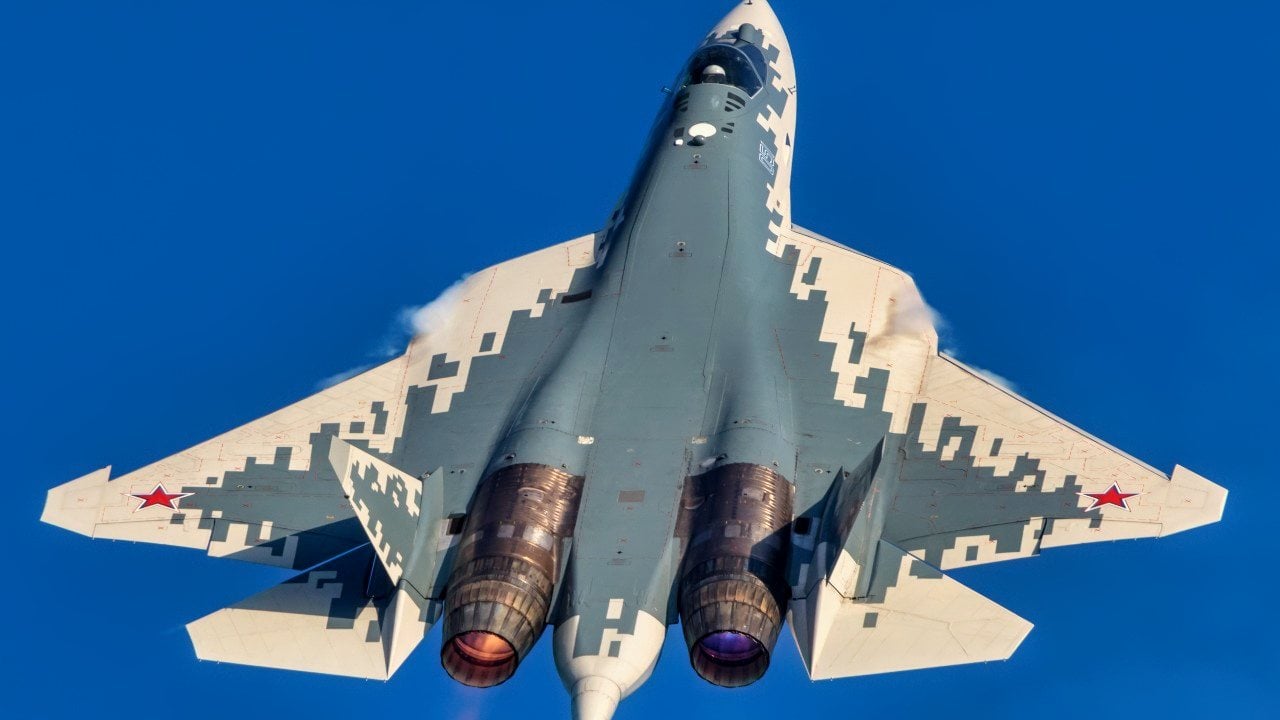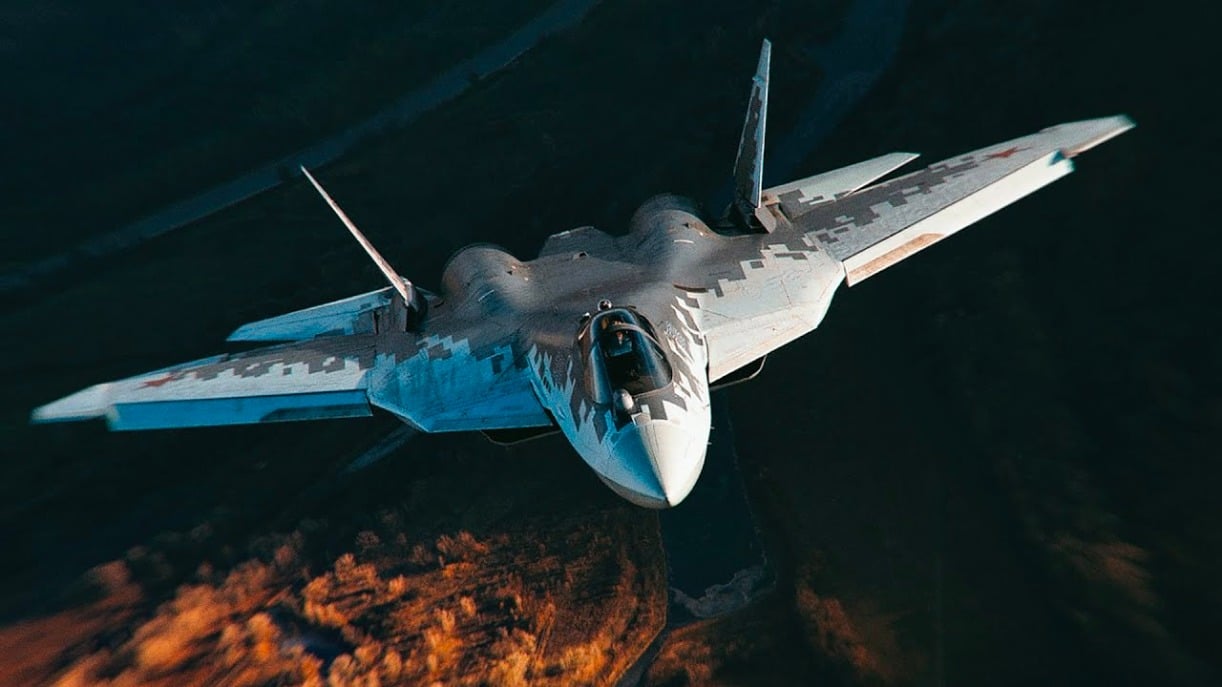Su-57 Felon: Could Russia and China Build This Fighter Together?
Despite the growing defense ties between Russia and China, a joint collaboration on the Sukhoi Su-57 fighter jet appears highly unlikely. While China benefits from Russian arms and technology, its advancements in aerospace—demonstrated by its domestically produced J-20 Mighty Dragon and J-35A stealth fighters—have surpassed Russia’s offerings.
What You Need to Know: Despite the growing defense ties between Russia and China, a joint collaboration on the Sukhoi Su-57 fighter jet appears highly unlikely. While China benefits from Russian arms and technology, its advancements in aerospace—demonstrated by its domestically produced J-20 Mighty Dragon and J-35A stealth fighters—have surpassed Russia’s offerings.

-Beijing’s reluctance stems from the Su-57's mixed reputation, its lack of combat testing, and China's strategic desire to maintain independence in defense production.
-Additionally, historical distrust between the two nations and the failure of past joint ventures, such as the CR929 civilian airliner project, further diminish the prospects for collaboration on the Su-57.
Could Russia and China Collaborate on Su-57 Felon?
Here are the facts: Russia is trying to find buyers, and possibly even a foreign partner to help produce its Sukhoi Su-57 (NATO reporting Felon); while China is actively seeking to bolster the People's Liberation Army Air Force (PLAAF).
It would seem the two nations are on track to work together to manufacture the Su-57 in larger numbers than Russia can do domestically. This could make a lot of sense based on those and other facts.
China has a growing aerospace industry and it could still get some Russian insight on various components notably engines – the area where Beijing has struggled. Russian industry is struggling to produce the Su-57 in significant numbers, and it had previously eyed the United Arab Emirates and India as potential partners.
Yet, a Sino-Russian partnership to build the Su-57 won't happen.
Closer Ties Between Russia and China
Yes, it is true that as the Wilson Center noted last month, the two nations "have conducted more than 100 joint military exercises, most of them since 2017, and many of them in distant locations such as the Mediterranean, the Arctic Circle, and off the South African coast."
It would also appear that the Sino-Soviet distrust is a distant memory.
Moreover, the Strategic Studies Institute at the U.S. Army War College further highlighted the growing defense cooperation between Beijing and Moscow.
"Throughout the period of China's military modernization, which began more than three decades ago, Russia has been China's top foreign arms supplier. Since 1990, Russia has sold more than $38.5 billion worth of arms to China, accounting for 77 percent of China's total arms imports during this period," the recent SSI report explained. It added that the arms sales have helped strengthen China's military capabilities.

"In recent years, the S-400 air defense system and Su-35 fighter jets have been the most prominent items that Russia has sold to China. Both of these systems strengthened China's ability to contest the airspace in the Indo-Pacific, increasing the difficulty that the United States would face in defending Taiwan," SSI further noted.
It is also true that China and Russia are working on a missile attack early warning system, and have engaged in the development of heavy-lift helicopters, missiles, and most notably conventionally powered submarines. Clearly, there is a Sino-Russian partnership already in place.
So Why Not the Su-57?
Given everything laid out, it would seem that the Su-57 would be the logical next step. However, the aircraft was openly mocked on Chinese social media when it arrived ahead of the 15th China International Aviation and Aerospace Exhibition earlier this month. That might not seem like a huge deal, but to Beijing, it was likely confirmation that the aircraft isn't nearly as advanced as Moscow has long claimed.
Then there is the fact that China has produced not one but two fifth-generation stealth fighters, the Chengdu J-20 Mighty Dragon and Shenyang J-35A. It also showcased a twin-seat variant of the former, the J-20S – the only two-seat fifth-gen fighter produced to date.

For Beijing to work with Moscow in any way on the Su-57 would be to admit it is still a junior partner in its relationship with Russia. It has taken the lead in aerospace and isn't about to go back.
Another notable point is that the Su-57 may have impressed some at the recent airshow, but the Kremlin has no good answer for why its supposedly most capable and advanced aircraft hasn't been employed in the ongoing conflict in Ukraine. The American-made F-22 Raptor and F-35 fighters are battle-tested – perhaps not against another manned fighter in actual combat, but each has performed quite well in a ground attack role in hostile airspace.
The same really can't be said for the Su-57.
Ties Could Loosen!
The other important consideration is that Sino distrust may not be so distant after all. China has built up its domestic arms industry so that it doesn't have to rely on Russia. Again, it isn't about to go back.
It once had very close ties with Moscow, and then it didn't. Beijing's distrust goes back well before the Cold War – to when Imperial Russia was among the European powers that sought concessions in China.
"China and Russia have a long, complicated history together, marked by periods of both cooperation and fierce strategic rivalry. The neighbors have strengthened ties over the past decade, but some experts question the depth of their strategic partnership, arguing that the countries’ alignment is driven more by their common rivalry with the United States than by any natural affinity," explained the Council on Foreign Relations in a backgrounder on the ties between the two authoritarian powers.
A Joint Program Already Crashed and Burned
Though China and Russia may be working on a number of projects, we still don't know to what degree. However, it was in July of this year that Russia exited a very high-profile joint airline project.
The two nations had been working on the civilian C929 for more than a decade – it was previously known as the CR929 with the CR standing for "China" and "Russia." But after Russia's unprovoked invasion of Ukraine in February 2022, the program hit turbulence when it couldn't obtain Western-made aircraft components.
China is now going it alone on the C929, which will be its first long-range widebody aircraft to be developed to meet international airworthiness standards. Commercial Aircraft Corporation of China (COMAC) will likely continue to go it alone with its aircraft development – and that could leave Russia's United Aircraft Corporation (UAC) seeking a partner for the Su-57.
Unless something changes, it would seem almost certain that Beijing will want anything to do with Russia's fifth-gen fighter.
Author Experience and Expertise: Peter Suciu
Peter Suciu is a Michigan-based writer. He has contributed to more than four dozen magazines, newspapers, and websites with over 3,200 published pieces over a twenty-year career in journalism. He regularly writes about military hardware, firearms history, cybersecurity, politics, and international affairs. Peter is also a Contributing Writer for Forbes and Clearance Jobs. You can follow him on Twitter: @PeterSuciu. You can email the author: [email protected].
Image Credit: Creative Commons and/or Shutterstock.
From the Vault


